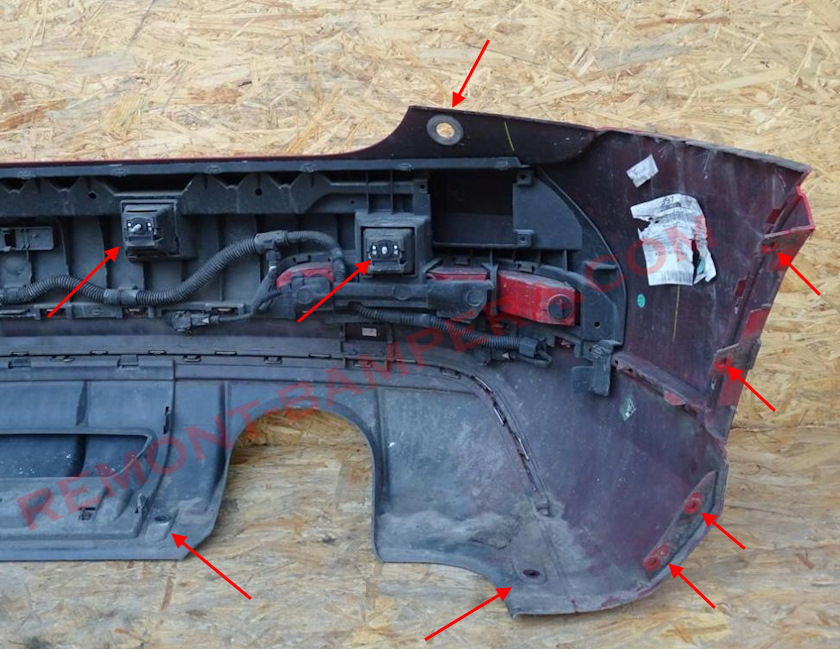When Audi introduced the Q3 in 2011, it was a strategic move to enter the growing market of compact SUVs, where the BMW X1 and Land Rover Freelander already dominated. The first generation, known under the index 8U, became the younger sibling of the Q5 and Q7 but with a more urban character. It wasn’t an off-roader in the classic sense but rather an "enlarged hatchback" with a raised seating position and stylish Audi-inspired design.
Internal Designation and Platform
The factory model code is Audi Typ 8U, which immediately indicates its relation to the Volkswagen Group’s PQ35 platform. Technically, the Q3 shared its foundation with the Volkswagen Tiguan I and even the Seat León, but Audi engineers made significant improvements: they adapted the suspension for a sportier character, added the signature quattro with a Haldex multi-plate clutch (on all-wheel-drive versions), and enhanced sound insulation.
Production Years and Facelift
- Launch and sales start: 2011 (in Europe from autumn, in Russia from 2012).
- Facelift: 2014 (for 2015 models), featuring updated styling and technology.
- End of production: 2018 (in China, it continued until 2021 under the name Q3 Classic).
After the facelift, the Q3 received:
- A new Singleframe grille—more angular, in line with Audi’s design language at the time.
- LED headlights (xenon remained standard, but top versions got full LED).
- A redesigned interior—featuring the optional Virtual Cockpit digital instrument cluster, an updated infotainment system, and higher-quality materials.
Bumper Plastic Marking: >PP-EPDM TV10<
How to Remove the Front Bumper
- Open the hood.
- Under the hood, remove four push-pins (or clips), release the fasteners, and remove the trim above the radiator grille (pull upward).
- Under the trim, unscrew six screws (inserted top to bottom) securing the upper part of the front bumper.
- From the underside, unscrew four screws (inserted bottom to upward) securing the lower part.
- Turn the wheels to the side.
- Release the front part of the wheel arch liners (held by clips; pull from bottom to top).
- In the wheel arches, unscrew four screws on each side securing the front part of the liners.
- Behind the liners, unscrew one screw on each side securing the bumper corners to the fenders.
- Release the clips in the fenders (pull the corners outward).
- With an assistant, carefully pull the bumper forward (watch for wiring).
- Disconnect electrical connectors.


How to Remove the Rear Bumper
- Open the trunk lid.
- In the trunk opening, unscrew two screws.
- Remove the rear trunk panel trim and open the covers in the side trunk trims.
- From inside the trunk, unscrew four nuts (requires a long 10mm socket; be careful not to drop them into hidden cavities).
- From the underside, unscrew four screws (inserted bottom to upward) securing the lower part of the rear bumper.
- Release the rear part of the wheel arch liners (held by clips; pull from bottom to top).
- In the wheel arches, unscrew four screws on each side securing the rear part of the liners and the side sections.
- Release the clips in the fenders (pull the corners outward).
- With an assistant, carefully pull the bumper backward (watch for wiring).
- Disconnect electrical connectors.


Body Type and Dimensions
The Q3 I is a five-door compact crossover, 4.39 meters long, making it one of the smallest in Audi’s lineup at the time. Despite its modest size, engineers managed to create a fairly spacious interior (especially for front passengers) and a 460-liter trunk (expandable to 1365 liters with folded seats).
Model Description: Performance, Engines, Features
The first-gen Q3 came with a wide range of petrol and diesel engines:
- Petrol: From 1.4 TSI (122 hp) to 2.0 TSI (211 hp; the RS Q3 version had 340 hp!).
- Diesel: 2.0 TDI (140–184 hp), including the fuel-efficient Ultra variant.
Transmissions included a 6-speed manual, 6- or 7-speed S tronic (dual-clutch automatic). Drivetrain options were front-wheel drive (Fronttriebler) or all-wheel drive (quattro).
The chassis was typical for Audi: precise steering, a somewhat stiff suspension (especially in S line versions), but excellent highway stability. The Q3 felt confident off-road, though serious off-roading wasn’t its forte.
Interesting Facts About the Q3 I
- The RS Q3 (2013) was Audi’s first RS model in the compact segment. Its 2.5 TFSI (340 hp, 0–100 km/h in 4.8 sec) proved even a small crossover could be high-performance.
- The Chinese Q3 Classic—after the Q3 II’s launch (2018), the old model was sold for three more years in China at a reduced price.
- The hybrid version (2014)—Audi Q3 hybrid (1.4 TSI + electric motor, 245 hp)—was rare and unpopular.
- Special editions included the Q3 Design Selection (unique colors and interior trim) and Q3 S line competition (sporty body kit).
- Production—The Q3 I was exclusively assembled in Spain (SEAT’s Martorell plant), unlike most Audis, which were typically made in Germany.
Conclusion
The Audi Q3 I (8U) is a classic example of a premium compact SUV from the early 2010s. It combined recognizable design, good performance, and practicality, though not without compromises (a tight rear row, firm suspension). The 2015 facelift added more tech, and the RS version turned it into a cult model. Today, the first-gen Q3 is a great choice among used premium crossovers—not the cheapest to maintain but reliable and stylish.

 English
English  Italiano
Italiano  Français
Français  русский
русский  Deutsch
Deutsch  Español
Español